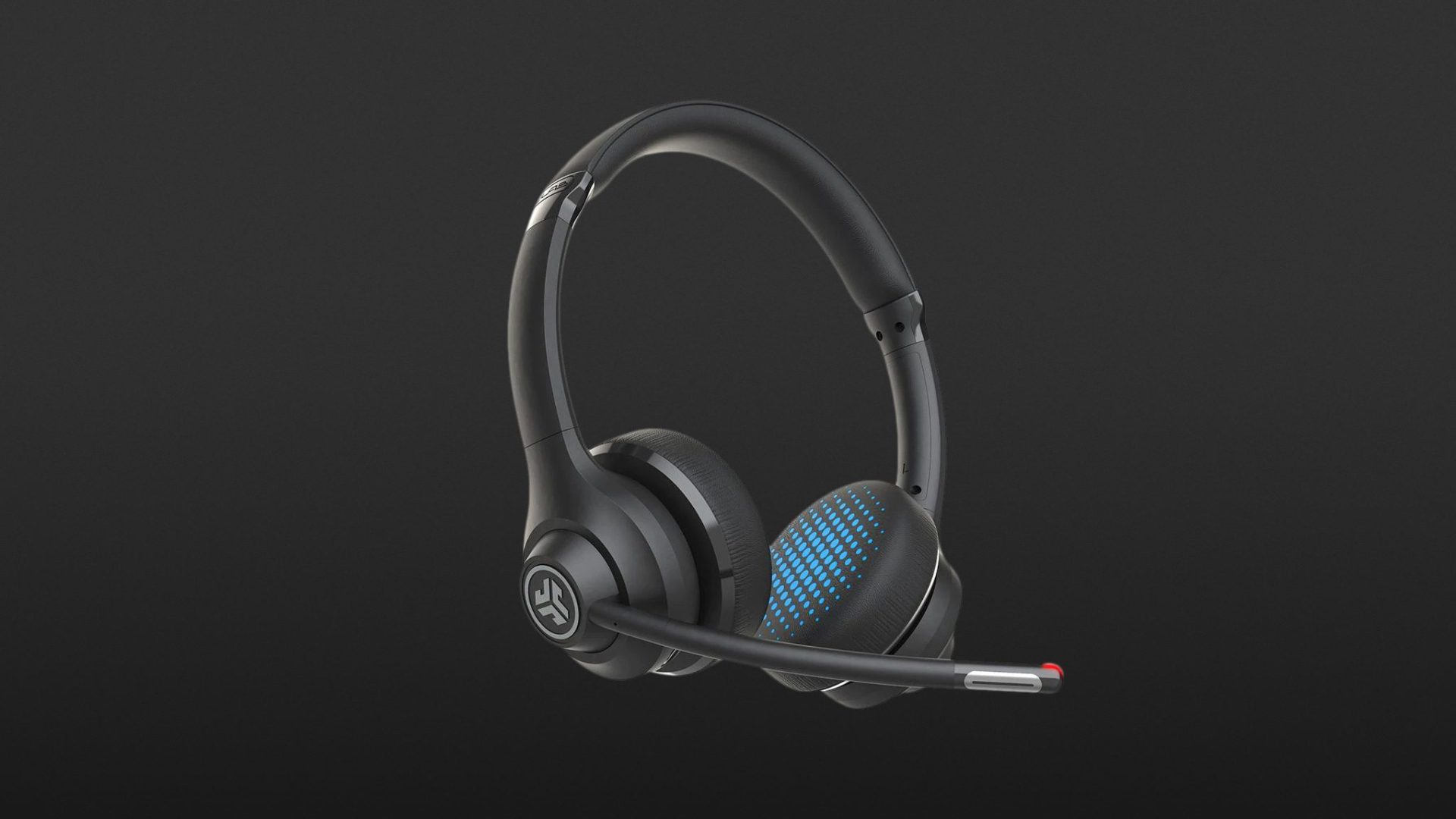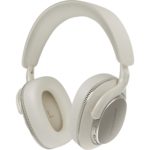If you are going to criticise the JLab Go Work, it would be for the cables, which are to some extent too short for their intended use, and for its rather harsh treble reproduction above moderate volume levels in music mode. However, the call quality during telephone calls and video conferences in voice mode via wireless and via cable is impeccable. This handy Bluetooth headset also scores points with its excellent battery life and support for multipoint connections.
- light, compact format
- powerful battery
- speech intelligibility of the microphone
- high Bluetooth range
- support multipoint connections
- rather harsh treble reproduction in music mode
- (too) short audio and charging cable
With the JLab Go Work, the Californian manufacturer offers flexible, wireless on-ears that have two sound modes and support a high-quality audio codec in the AAC format. The headset’s dual microphone technology also ensures good speech intelligibility.
With a weight of 158 grams, the JLab Go Work is comfortable to wear even over long periods of time, especially as the fit is loose rather than tight and has a low contact pressure. The high-quality headband padding also offers advantages, while the swivelling ear cups have sufficient mobility to be adjustable. At the same time, the headband size adjustment covers a wide range, so head shapes from small to extra-large are covered. The workmanship of this robust-looking headset gave us nothing to complain about. A certain amount of heat can develop on the ears during prolonged use; however, the closed design of these on-ears offered perceptible shielding and didn’t emit much sound to the outside.
Battery life
The JLab Go Work is characterised by an extremely long-lasting lithium-polymer battery, which means that the headset only requires an external power source after a good 47 hours at higher volume levels. A complete charging process via the USB-C port takes two hours and 40 minutes, for which a corresponding USB-C to USB-A charging cable is included. These on-ears can also be used wirelessly during charging, which means that the headset can theoretically be used at any time. However, this is not possible with the included charging cable, as the length of 55 centimetres is definitely too short.
As an alternative to Bluetooth operation, the JLab Go Work can also be used wired, for which a USB-C to 3.5 mm jack cable is included. The cable measures 92.5 centimetres, which makes it possible to work on the laptop even if there is not necessarily much freedom of movement. However, this cable is definitely too short for use with a computer in a tower case.
Operation
The headset supports Bluetooth standard 5.0 and offered a high range of 15 metres within an urban environment while also bridging several rooms with stability. The JLab Go Work are paired by pressing and holding the multifunction button on the right side, which switches the system on and puts it into pairing mode. Multipoint connections with two devices are possible, allowing, for example, a laptop and a smartphone to be connected at the same time.
Once a wireless connection is established, the multifunction button controls playback and is used to answer and end phone calls, while a short press and hold rejects incoming calls. Voice assistants can also be activated by pressing twice. The volume can be controlled with the plus and minus buttons, which can also be pressed and held to select a track by using the plus button to skip forward and the minus button to skip back. Holding down both buttons simultaneously switches between the two handset sound settings, “Telephone” and “Music”. However, this can only be done during playback. Complementing the 3-button remote, these on-ears offer direct access to the microphone if necessary it can be muted via a button integrated into the right ear cup surface. A red LED at the tip of the boom microphone indicates that the microphone is deactivated. However, configurable headset and sound settings are not provided by the JLab Go Work, as there is no software or app connection.
Voice quality
The headset’s boom microphone is flexibly adjustable and can be securely positioned near the mouth, as well as vertically out of the field of vision so as not to obstruct typing, for example. While one microphone is used to transmit the voice, a second filters ambient noise so that the JLab Go Work can be used to communicate clearly even with a busy background. However, it should be noted: If the music mode is active and a call is answered, it is not possible to switch to voice mode during the conversation. Qualitatively, however, there is a distinct difference, as the caller on the other end of the line sounds a little muffled in music mode, and one’s own voice is perceived as quite sharp. This is not the case in speech mode, which is specifically designed for the reproduction of voices, where the lower frequency spectrum in particular, but also the treble range, is lowered. In addition, one’s own voice can be passed through with the help of a triple press of the multifunction button, which creates a more natural conversational atmosphere, even if the reproduction is quite loud.
However, better voice quality with a very clear presentation on both sides can be achieved in wired mode. Although the headset cannot be controlled via the cable, the microphone technology and the red LED for muting are still active, using battery capacity.
Sound
Characteristic of the JLab Go Work’s music mode is a treble-rich reproduction with a bright rather than dark sound image, which does not seem cold or sterile, as basic warmth is present. In modern music styles, the round, compact bass reproduction is pretty powerful and quite well defined, although the imaging does not reach down to the lowest regions. The mid-range reproduction is also appealingly precise, skilfully revealing details such as grabbing noises and rendering voices present and intelligible. However, one weak point of the tuning is the treble reproduction, which seems quite energetic at first, but falls off in the upper regions. Sibilants, in particular, tend to be overdone, which can be perceived as sharp above medium volume levels.
In wired mode, the headset clearly has more emphasis in the bass and sounds darker, but also somewhat muddy and, in bass-oriented productions, occasionally muffled. The upper-frequency range in particular seems downright timid in contrast to the music mode via wireless, resulting in a full, warm and dense sound as an alternative.
Technical specifications
- Ear couplingOn-ear
- Typeclosed
- Transducer principledynamic
- Frequency response (headphones)20 - 20.000 Hz
- Impedance32 ohms
- Sound pressure level (SPL)117 ± 3 dB
- Weight with cable172 g
- Weight without cable158 g
What's in the box
- USB-C to USB-A charging cable
- USB-C to 3.5 mm audio cable
Special features
- BT codecs: SBC, AAC
- BT version: 5.0
- BT profiles: HSP, HFP, A2DP, AVRCP











































